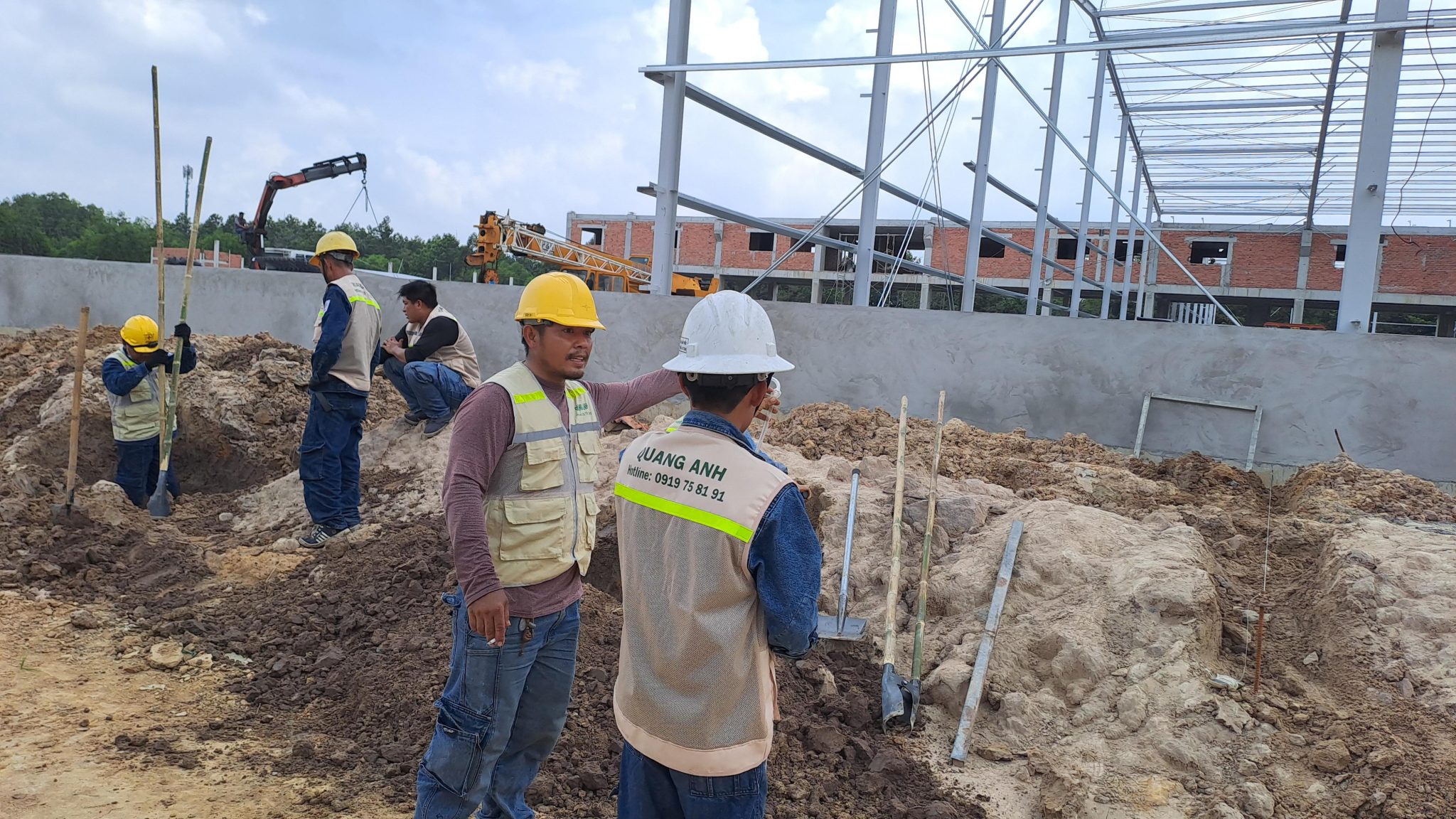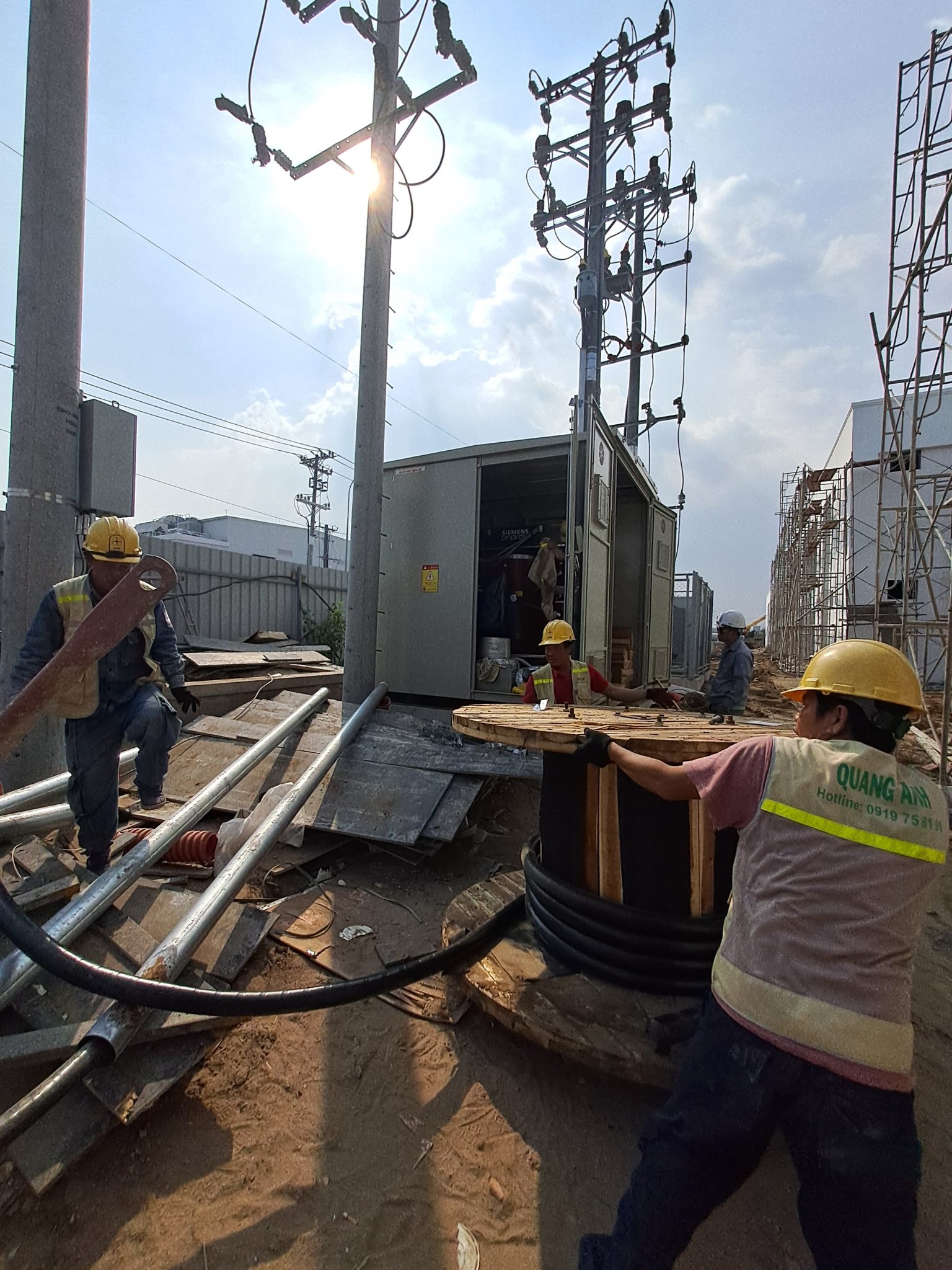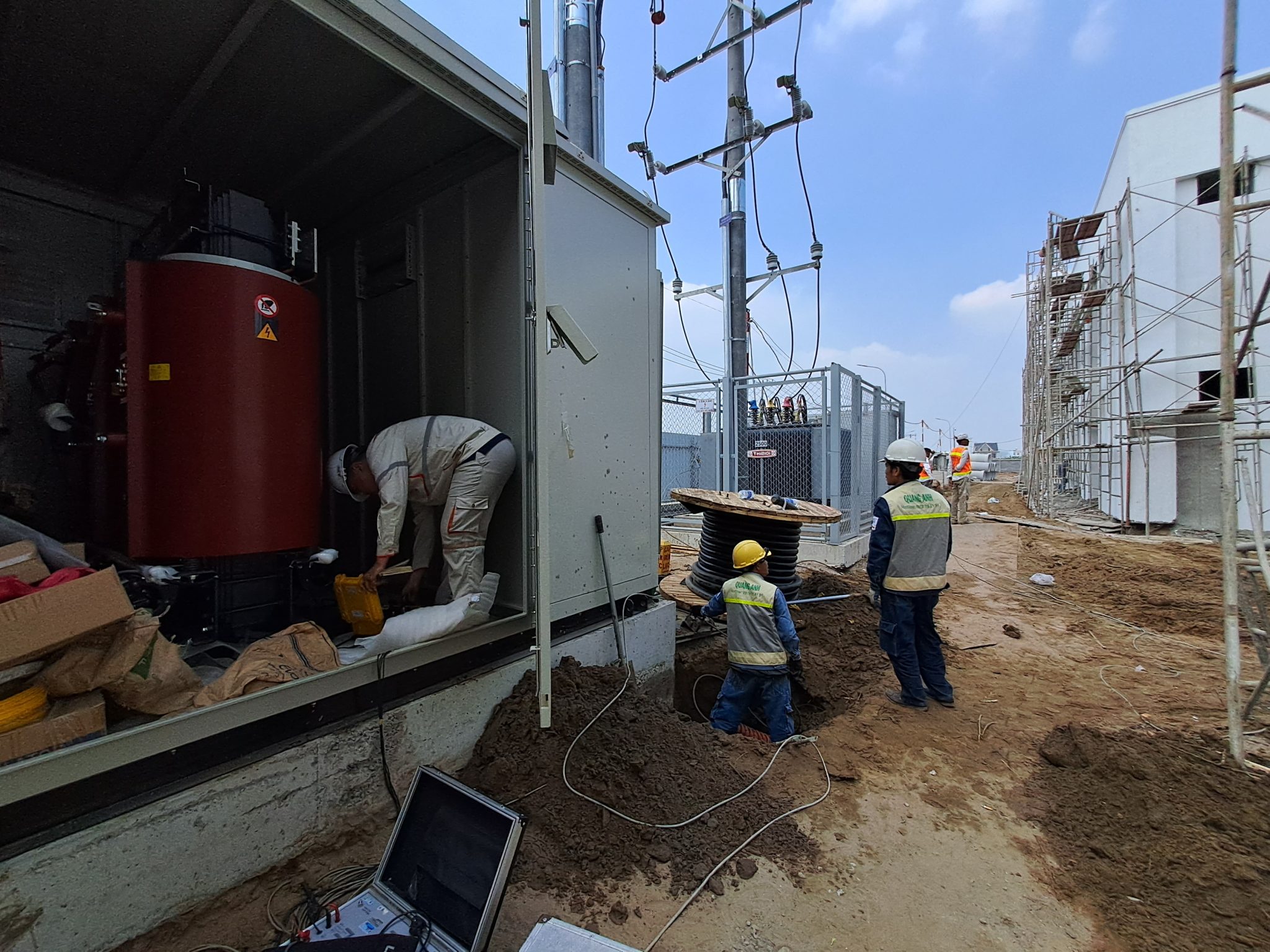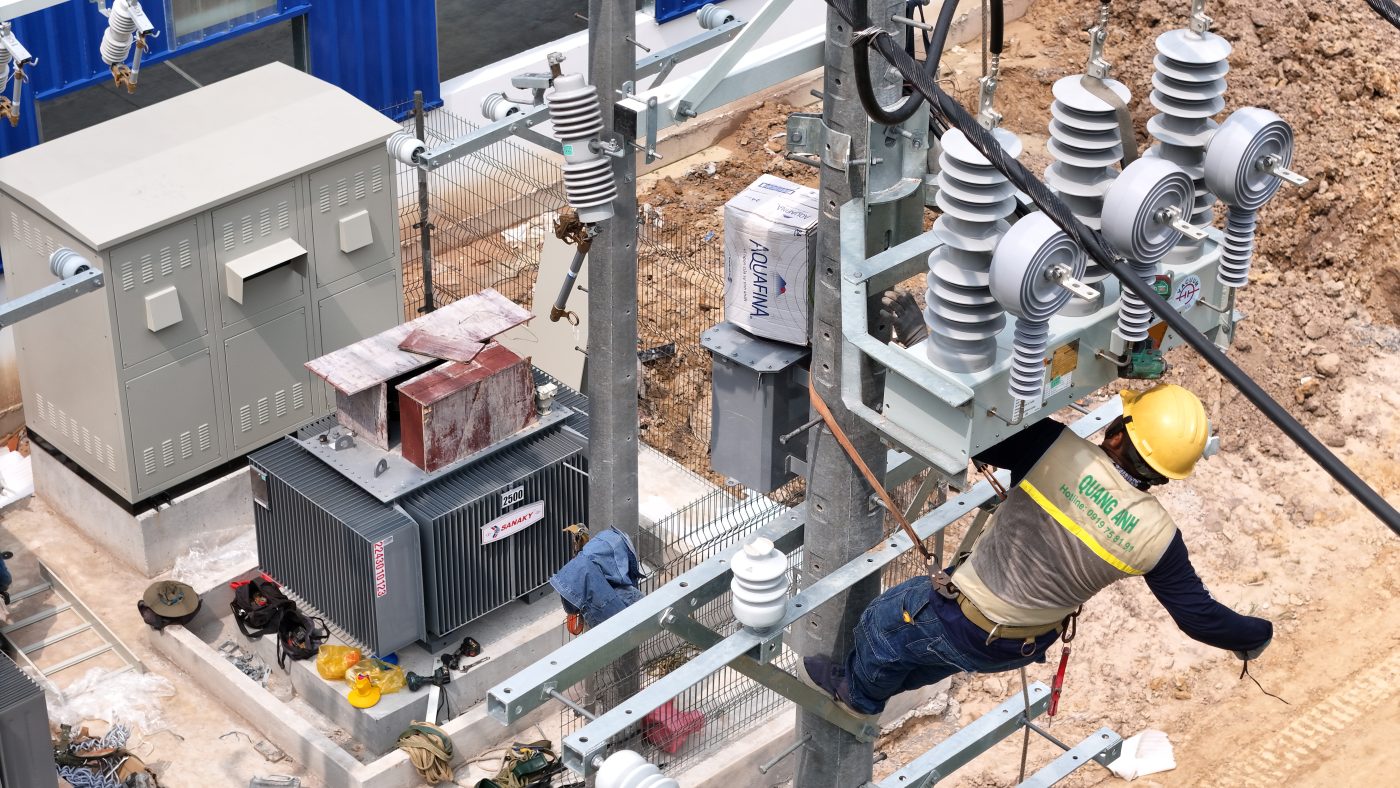Designing industrial electrical systems is a complex process involving the planning and installation of electrical infrastructure within factories and industrial facilities, demanding high levels of safety and efficiency.
Effective Industrial Electrical Design Process
The design of industrial electrical systems begins with researching and gathering data, identifying energy needs, and pinpointing specific technical requirements. An initial design sketch is created to outline the overall layout of the electrical system, detailing the placement of key devices such as electrical cabinets, cables, and lighting. This sketch is then submitted for approval, ensuring the equipment layout is practical and operational costs are minimized. Ultimately, the design is standardized to comply with safety standards and government regulations, alongside load balancing calculations to optimize system performance.
-
Customer Information Gathering
The process starts by gathering customer requirements, which includes details about the project space, workforce size, and equipment usage needs. Onsite surveys verify data accuracy, providing a solid foundation for subsequent steps.
-
Consultation and Proposal Development
Based on collected data, experts analyze and propose solutions to ensure adequate energy supply for the industrial electrical system. This involves calculations and allocating the electrical system to ensure aesthetic, economical, and safe design. The most suitable proposal will be selected to advance to the following stages.
-
Detailed Design
Producing a detailed electrical technical drawing follows, including calculations of distances between devices, cable layout, and necessary safety factors. High-quality materials from reputed brands like Cadivi or Schneider are selected to guarantee system performance and durability.
-
Industrial Electrical Cabinet Design
Block diagram sketches play a crucial role in designing electrical cabinets, along with load and energy demand projections to ensure load balance.
-
Review and Approval
The thorough examination of technical drawings is conducted to ensure they meet technical and safety requirements. Necessary adjustments are made before final approval is granted.
-
Construction and Inspection
Construction proceeds according to the approved design, accompanied by stringent safety checks to prevent risks during industrial electrical system operation.

Safety and Efficiency Factors in Design
Safety is a paramount consideration in industrial electrical design, requiring compliance with safety codes and ensuring user safety. Efficiency is ensured by electrical load balancing and energy use optimization. Cable tray designs must be not only safe but also aesthetically pleasing. Lighting systems are tailored to specific areas to maximize utility and usage efficiency.
Safety Factors
Safety in architectural and interior design is a critical foundation for any project.
- Fire Safety: Efficient fire alarm systems, clear emergency exits, and explosion-proof designs are essential for user safety (1)(5).
- Electrical Safety: The electrical system must adhere to safety standards to avoid risks like electrical shorts. Protective devices such as fuses and automatic circuit breakers are vital components of electrical safety design (1)(5).
- Child Safety: Interiors should utilize safe materials, minimize sharp edges, and pay particular attention to window and balcony designs to prevent accidents (1)(5).
- General Safety: Overall project safety encompasses user safety and construction safety. Installing alarm systems, surveillance cameras, and security control rooms are crucial (2)(3).
Efficiency Factors
Effective design ensures a project operates optimally concerning energy and functionality.
- Utilization Efficiency: Optimized spaces provide high comfort and improved functionality (4).
- Technical Safety Assurance: Design must follow technical standards and use high-quality materials. This guarantees safety and energy efficiency in construction (4)(3).
- Aesthetic Criteria: Combining safety and aesthetics in design creates appealing and safe environments for living and working (4)(5).
- Occupational Safety Organization: The construction process must strictly adhere to labor safety regulations, including preparing detailed drawings and safety measures (3).

Energy Demand Forecasting and System Upgrades
Energy demand forecasting is a strategic task to maintain stable operation of industrial electrical systems. Long-term energy planning and predicting renovation and upgrade measures essential for meeting increasing use demands and sustaining system viability in the future.
In the rapidly advancing economic landscape, forecasting electric demand is crucial. By 2025, electricity demand growth is expected to increase by around 12-13% annually, playing a pivotal role in economic and industrial development. Each 1% economic growth correlates to a 1.5% increase in electricity demand, illustrating their close relationship.
Projected electricity production in 2025 is about 347 billion kWh, marking an increase of approximately 37 billion kWh from 2024, reflecting the power industry’s continual expansion. To meet these needs, system upgrades are essential.
System Upgrade Solutions
- Power Supply Solutions: Ensuring sufficient fuel for power generation and completing major repairs before the dry season is critical for stable electricity supply.
- Renewable Energy Development: Renewable energy plants should be maximally deployed to meet load demands and optimize the electrical system’s capacity.
- Enhancing Backup Power Sources: Gas and hydroelectric power, alongside electricity trades with Laos, serve as contingency strategies, providing power during peak demand periods.
- Electrical System Management and Operation: The Ministry of Industry and Trade has pre-approved the 2025 electrical system operation plan to optimize management efficiency.
Challenges and Solutions
Electricity supply in 2025 faces many challenges due to high demand growth and external factors like climate conditions and fuel sources.
Solutions for this situation include aggressively developing renewable energy, improving electricity usage efficiency, and applying smart electrical system management technologies to optimize supply.
Forecasting power demand and retrofitting the system provides a reliable basis for long-term planning, particularly in developing sustainable power sources.

Optimizing the industrial electrical design process offers technical and strategic advantages for production facilities. Safety, efficiency, and compliance with standards enable the system to meet industrial needs fully.
Contact QuangAnhcons via Hotline: +84 91975 8191 for expert advice on optimal industrial electrical design solutions.
QuangAnhcons excels in providing industrial electrical design and construction services, ensuring quality, safety, and cost-effective operation optimization.
[contact-form-7 id="7239967" title="Contact form 1"]


Related Posts
Tay Ninh Solar Power Planning: Technical Framework, Grid Interconnection, and Rollout Roadmap
Technical overview of solar planning in Tay Ninh: irradiation, grid capacity, permitting, design, operations, and [...]
Dec
Binh Duong Solar Planning: Regulatory Framework, Grid Interconnection, and an Implementation Roadmap for Factories and Industrial Parks
An overview of Binh Duong solar planning: legal framework, interconnection, design, risk management, and an [...]
Dec
Solar Farm Repair: O&M Workflow, IV Curve Diagnostics, Thermography, Inverter Service and Utility-Scale Safety
A utility-scale solar farm repair plan centered on O&M, IV curves, thermal imaging, inverter service, [...]
Dec
Dong Nai Solar Power Plan 2023–2025: Tri An 1,029 MW, Grid Upgrades and the DPPA Pathway
A complete look at Dong Nai’s solar power plan: Tri An 1,029 MW, irradiation potential, [...]
Nov
Quang Ngai Solar Power Plan 2024–2030: Legal Framework, Irradiance Potential, and Development Roadmap
A complete look at Quang Ngai’s solar power plan: capacity targets, irradiance (PVout), development zones, [...]
Nov
Solar Damage Assessment Services: On-Site Procedures, EL/IV/Thermography Testing & Compliance with Standards
Discover IEC/UL/NEC standard solar damage assessment processes: on-site evaluation, EL and IV curve testing, thermal [...]
Nov
Comprehensive Package Estimate for a 1800MVA 500kV Substation: Scope, Configuration 3x600MVA, Standards and Timeline Management
An overview of the 1800MVA 500kV substation estimate: construction scope, configuration 3x600MVA, GIS/AIS, SCADA, standards, [...]
Nov
Factory Electrical Systems: Comprehensive Design and Implementation Guide
Discover the detailed and safe process of factory electrical systems design and implementation. [...]
Oct
Blueprints Required for Factory Construction Permits
Discover the necessary blueprints in factory construction permit applications, from floor plans to electrical and [...]
Oct
What Are the Requirements for a Factory Construction Permit? A Comprehensive Guide
Explore the documentation and steps needed to secure a factory construction permit for streamlined project [...]
Oct
Factory Construction Permit Procedures in Vietnam: Essential Guidelines and Documents
Learn the procedures for securing a factory construction permit in Vietnam, focusing on document preparation [...]
Oct
Key Steps in the Factory Construction Process
Discover the essential steps and requirements for building factories. [...]
Oct
Comprehensive Electrical Substation Solutions by Quanganhcons
Discover the cutting-edge electrical substation solutions offered by Quanganhcons for industrial applications. [...]
Oct
Investment Costs for a 1MWp Solar Power System and Influencing Factors
Explore the investment costs for a 1MWp solar power system in Vietnam and the influencing [...]
Sep
QuangAnhcons: Elevating Wind Energy Solutions
Explore QuangAnhcons' leadership in wind energy and renewable solutions in Vietnam. [...]
Sep
Electrical Contractor Strategies at Becamex Industrial Park
Discover the strategic advancements and partnerships of the electrical contractor at Becamex Industrial Park. [...]
Sep
Investment Insights for 1MW Wind Energy in Vietnam: Costs and Opportunities
Discover the detailed analysis of costs and opportunities for investing in 1MW wind energy projects [...]
Sep
Advanced Electrical Installation Solutions by QuangAnhcons
Explore advanced electrical installation solutions and modern technology with QuangAnhcons. [...]
Sep
Enhancing Industrial Electrical Services with Quanganhcons
Discover Quanganhcons' expertise in industrial electrical services, offering efficient and sustainable power systems. [...]
Sep
Comprehensive MEP Solutions by QuangAnhcons: From Design to Maintenance Excellence
Discover optimal MEP solutions with QuangAnhcons, dedicated to excellence from design through maintenance. [...]
Sep